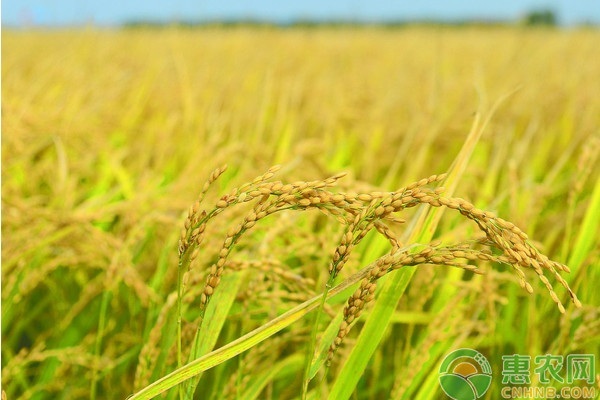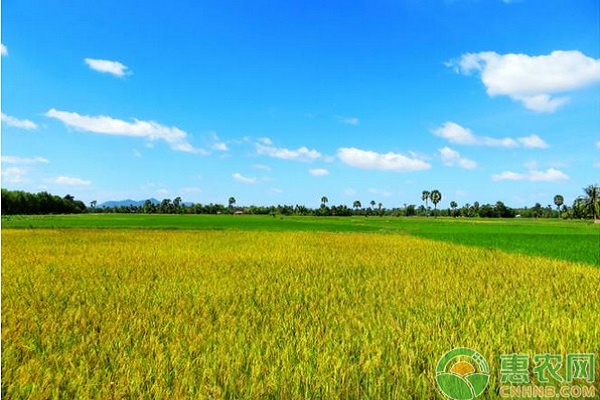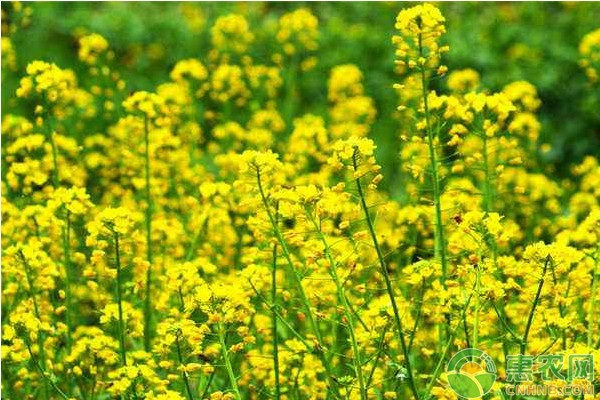Rice-canola double-season high-yield cultivation management techniques and pest control
At present, the traditional cultivation method of planting rice and rapeseed is seedling transplanting, but the seedling transplanting is not only labor-intensive, high-cost, poor planting efficiency, but also destroys the soil tillage layer and the aggregate structure. Through several years of experiment and production practice of double-season no-tillage direct cultivation mode of rapeseed and rice, no matter whether it is rape or rice, using no-till live broadcast, not only can save labor and save soil ecological environment, but also greatly improve planting efficiency.

1 variety selection
Both rice and rapeseed are broadcast live, and the total growth period of the two can not exceed 365 d, which is better than 360 d, so that even if the weather changes, it can ensure the safety and maturity of rice and rapeseed, and achieve high yield and stable yield. Choose varieties with developed roots, strong ability to resist lodging, and strong ability to divide tillers. Rapeseed varieties with a total growth period of 118-222 d, such as Zhejiang University 622 and Zhejiang University 619; rice varieties with a total growth period of 135-140 days, such as Y Liangyou 1998, Jingliangyouhuazhan, Zhunliangyou 893, etc.
2 early broadcast
Appropriate early sowing and appropriate increase in seeding rate, cultivate strong seedlings, and form high effective panicles. The seeding rate of rapeseed is 3.00~3.75kg/hm2. It is best to sow before October 15th. Before sowing, use water or 10% saline to select seeds. When planting, mix the seeds with 1.5kg of silt and mix them twice. Immediately after the sowing, the trencher is used to cover the trench. The sowing amount of rice is 22.5~30.0kg/hm2, preferably before the end of May. It is soaked in soaking seeds and sown in time. The eight pieces of locusts are used to disperse the slag evenly, which not only promotes seed rooting, but also improves seedling emergence rate. And uniformity.
3 scientific fertilizer
No-till live broadcast needs to increase the amount of pre-fertilization, and promote strong seedlings and early seedlings. The base fertilizer is generally applied before sowing, and the top dressing is scientifically fertilized according to the field fertility and the condition of the seedlings.
Rape ternary compound fertilizer (17-17-17) 450 kg / hm2, holding boron fertilizer 6.0 ~ 7.5 kg / hm2 as the base fertilizer; rapeseed 4 ~ 6 leaves, timely application of top dressing after the seedling, Shi Sanyuan compound Fertilizer (17-17-17) 150 kg / hm2, the seedling potential difference can be appropriate early to pursue more. The wax fertilizer is mainly farmyard manure and organic fertilizer; about 10 cm in rapeseed, 112.5~150.0 kg/hm2 of urea or 225 kg/hm2 of ternary imported compound fertilizer.
The ratio of nitrogen, phosphorus and potassium demand for hybrid rice is generally N:P2O5:K2O=1.00:0.45:1.00. Datian Shi Sanyuan compound fertilizer (16 -16 -16) 300 kg / hm2 as the base fertilizer; when the rice grows to 2 leaves and 1 heart, apply compound fertilizer (16-16-16) 300kg / hm2 for top dressing; rice tiller medium-term urea 150kg/hm2+ potassium chloride 112.5 kg/hm2 was used as the second top dressing; when the rice entered the booting stage, urea was applied 75kg/hm2 for the third top dressing.

4 Water slurry management
Lodging is a problem that is easy to occur in no-till live broadcast. The management of water slurry is not in place, the root system is poorly developed, and it is easy to fall in the later stage. Once it is lodging, the yield is greatly reduced. Conversely, if the water slurry is in place and the root system is well developed, it will not fall. phenomenon. Rape is afraid of waterlogging during the whole growth period. During the whole growth process, drainage and drainage should be done to reduce the groundwater level and the humidity in the field, which can not only improve the growth of roots, but also reduce the occurrence of Sclerotinia. Prevention of rice lodging mainly lies in the control of water. The whole process of rice growth and water slurry management is very important. It not only needs to meet the water needed for rice growth, but also meets the conditions for promoting the growth of rice roots. The seedling stage is based on “semi-ditch water, ensuring that the water is not on the raftâ€, so that it can meet the water, temperature and oxygen required for seed germination through soil capillary water supply, and avoid scalding seeds and seedlings due to stagnant water; Alternating wet is the main thing to dry down after watering once, which is beneficial to rice tillering and rice root growth. The booting stage should be based on shallow water irrigation, which can meet the requirements of water requirements at the booting stage without affecting Rice root growth.
5 pest control
Pest control should comply with the principle of “medical use, no disease, no diseaseâ€, reduce the amount of pesticides, improve the quality of agricultural products, and at the same time do a comprehensive field treatment measures to reduce the probability of occurrence of pests in the field.
The rapeseed seedlings were treated with 10% imidacloprid + 5% methyl salt to control aphids and green worms; after convulsions to the initial flowering stage, 50% carbendazim WP was sprayed twice to prevent the occurrence of sclerotinia.
In the rice seedling stage, the control of rice locusts should be done well. In the middle and late stages, prevention and control of rice leaf roller, rice stem borer, stem borer, brown planthopper, sheath blight and rice blast should be done.

Controlling grass damage is a key measure to achieve high yield and stable yield of no-till. Generally, chemical weeding is adopted, which saves labor and has a good effect.
Rape is sprayed with 50% acetochlor on the day after sowing or on the second day; when the plant grows to about 5 leaves and 3 leaves of weeds, there are still more weeds in the field, with 17.5% refined quinquin A fine spray of emulsified cream or canola to control weeds in the field.
When rice is used in 2 leaves and 1 heart, it is sprayed with 20% of it + cyhalofoprin; when the rice grows to 6 leaves, if there are more weeds in the field, the second weeding is carried out, the same as the first time, but the same as the first time, but the same The amount of cyhalofoprin is doubled.
6 timely harvest
Whether the harvest period is the best, directly affects the output per unit area and the quality of agricultural products; especially for mechanical harvesting, we must grasp the best time for harvesting. The best harvest period for rapeseed is 85% in the color of the pods, which turns from yellow to gray; the best harvest period for rice is 85% waxy yellow in the valley. Timely harvesting to prevent the occurrence of buds on the ears.
D-tagatose is a rare natural monosaccharide, which is the ketose form of galactose and the epimer of fructose. The sweet characteristic is similar to sucrose, and the heat produced is only one third of sucrose, so it is called low calorie sweetener. Tagatose has excellent nutritional characteristics such as low caloric value, zero glycemic index, blood glucose passivation, caries free, prebiotic effect and Antioxidant activity. Tagatose has been approved by FDA as a pharmaceutical excipient for throat moistening tablets, over-the-counter diabetes cough syrup, chewable antibiotic tablets, non steroidal anti-inflammatory drugs and pediatric drugs. FDA Approves tagatose to replace sucrose and other sweeteners in toothpaste, mouthwash and cosmetics.
D-Tagatose Powder,Aspartame Powder,Erythritol Powder,Monk Fruit Extract
Xi'an Tian Guangyuan Biotech Co., Ltd. , https://www.tgybiotech.com